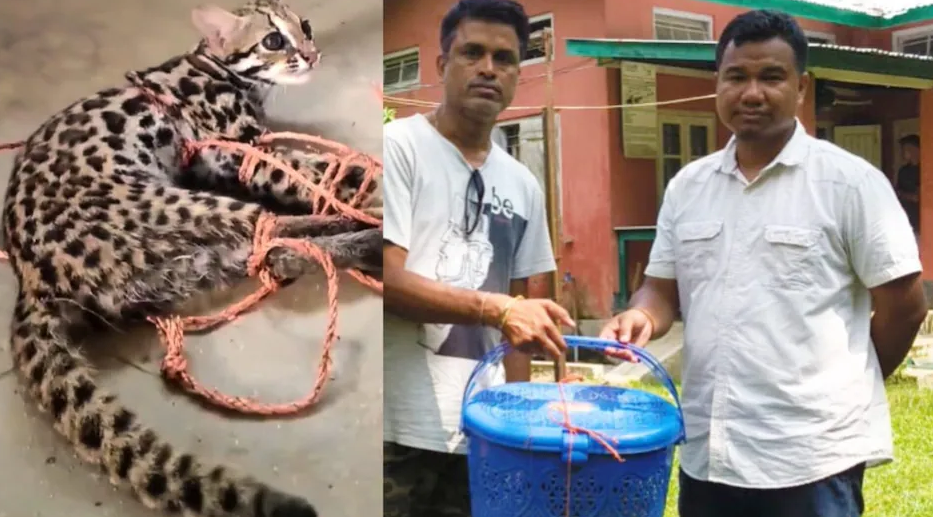In a commendable display of community and wildlife authority collaboration, an adult leopard cat was rescued in the Hatipota area of the Dhubri district on Friday. The abandoned feline was found in the village of Moskaguri and subsequently handed over to the Forest Department, which oversees the protection and management of local wildlife.

This rescue operation highlights the positive impact that local communities can have when working together with wildlife authorities to protect and conserve wildlife. Such efforts are essential for maintaining biodiversity and ensuring the survival of species like the leopard cat (Prionailurus bengalensis) in their natural habitats.
The villagers, upon discovering the leopard cat, promptly contacted the Forest Department. Recognizing the importance of the situation, the department officials swiftly arranged for the animal to be transferred to a rescue and rehabilitation unit in Charaikhola, Kokrajhar. These units are crucial for providing necessary care and treatment to wildlife until they can be safely released back into their natural environments.
The leopard cat, known for its distinctive spotted coat similar to that of a leopard, is a small wild cat native to South and East Asia. As a nocturnal and solitary animal, it is typically found in forests, grasslands, and agricultural areas near human settlements. Despite being listed as “Least Concern” on the IUCN Red List due to its wide distribution, the leopard cat faces significant threats from habitat loss, poaching, and human-wildlife conflicts.
Efforts to rescue and rehabilitate injured or displaced leopard cats are critical for maintaining their populations in the wild. This particular incident serves as a poignant example of how community involvement can play a pivotal role in wildlife conservation. The villagers’ quick and responsible actions ensured that the leopard cat received timely help, potentially saving its life and contributing to the broader conservation efforts for the species.
Moreover, this rescue underscores the importance of managing human-wildlife interactions in regions where their habitats overlap. Effective management strategies, including educational programs and awareness campaigns, can foster coexistence between local communities and wildlife. By promoting respect and understanding, such initiatives help reduce conflicts and ensure the safety of both people and animals.
The rescue of the leopard cat in Dhubri district not only showcases the critical role of community awareness in wildlife conservation but also serves as an inspiring reminder of the impact collective efforts can have on protecting endangered species. As wildlife authorities and local communities continue to work together, there is hope for a more harmonious coexistence and a brighter future for the region’s diverse fauna.

